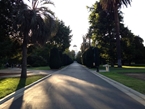SACRAMENTO, California — High-speed rail has become one of the most contentious issues in the contest between Governor Jerry Brown and Republican challenger Neel Kashkari. In the one (and only) gubernatorial debate, Kashkari attacked the Democrat incumbent’s high-speed rail policy almost immediately, and has called it the “crazy train” in ads. A majority of Californians opposes the high-speed rail plan. So why does it enjoy so much support in Sacramento?
Aside from the usual reasons–i.e. utopian visions of one-party rule, plus opportunities for rent-seeking and by special interests and lobbyists–there is another explanation: Sacramento enjoys one of the most convenient and scenic rail links in the country: the Capitol Corridor, which links the Central Valley with the Bay Area. In less than two hours, the train takes visitors and commuters between Oakland and the state capital.
The Capitol Corridor enjoys a staggering record of on-time performance, in excess of 95% for the past two months. (Contrast that to just over 70% for the Acela Express, the popular and profitable route serving the northeast U.S. from Boston to Washington.) It also runs along the San Francisco Bay, taking in views of nature as well as of heavy industry in the East Bay, with vistas of golden mountains near California wine country.
From urban Oakland to the rural Central Valley, from harbor to highway, from refinery to winery, the Capitol Corridor seems to encompass the social, economic and topographical profile of the Golden State. It is, in effect, a microcosm of the whole. Politicians like Jerry Brown, who can zip from Oakland to Sacramento in comfort (tracing his political path), might be forgiven for suggesting statewide high-speed rail would be just as easy.
I boarded the Capitol Corridor Friday morning in downtown Sacramento just before departure at 4:30 a.m. The train–one of Amtrak’s newer models–was virtually empty.
There was little to see out the windows on the early-morning run–not this late in summer, anyway, when sunrise is later every day–but the cafe car featured classic lighting on some of the tables, adding a nostalgic touch to a functional workspace.
The train arrived early in Oakland, and I was able to switch back to an eastbound train merely by walking across the platform. Now, daybreak began to offer some interesting scenery.
The train runs along the San Francisco Bay from Emeryville to Martinez. Downtown Oakland melts into a quiet, marshy coastline as the train runs so close to the water as to create the impression of sailing on a boat.
Then nature falls away as factories, bridges, and refineries line the coast in the eastern stretches of the bay towards the mouth of the San Joaquin River.
Once across the Benicia-Martinez Bridge, the bay disappears in favor of golden foothills, much like those near Silicon Valley The coastal fog licks at the edges of mountains to the west, where the moisture sustains the grapes of Napa and Sonoma.
In what seems like just a few minutes, the mountains of the coast fade and the train hits the Central Valley, with its Midwestern flatness and farmland, before arriving in Sacramento.
There can hardly be more geographic variety on any other train line connecting two major cities, anywhere in the country. An entire state, it seems, in one journey.
Yet high-speed rail is much more complicated than the Capitol Corridor.
There are the ballooning costs, for one thing. Then there are the yet-to-be resolved right-of-way issues, the environmental studies yet to be done, and objections overcome; the residential restrictions on speed through suburbs and exurbs; the fact that the high-speed portion of the trip won’t actually connect downtown San Francisco to downtown Los Angeles, but the outskirts of each; and more.
The ticket prices for high-speed rail are also likely to be steep, even after heavy subsidies.
And public transportation in California is already underutilized. Will a bullet train that races through one of the less scenic–though still picturesque–portions of the state fare much better?
These are serious concerns, enough to render the high-speed rail a “crazy” idea.
Yet from the comfort of the Capitol Corridor, they seem remote.

COMMENTS
Please let us know if you're having issues with commenting.